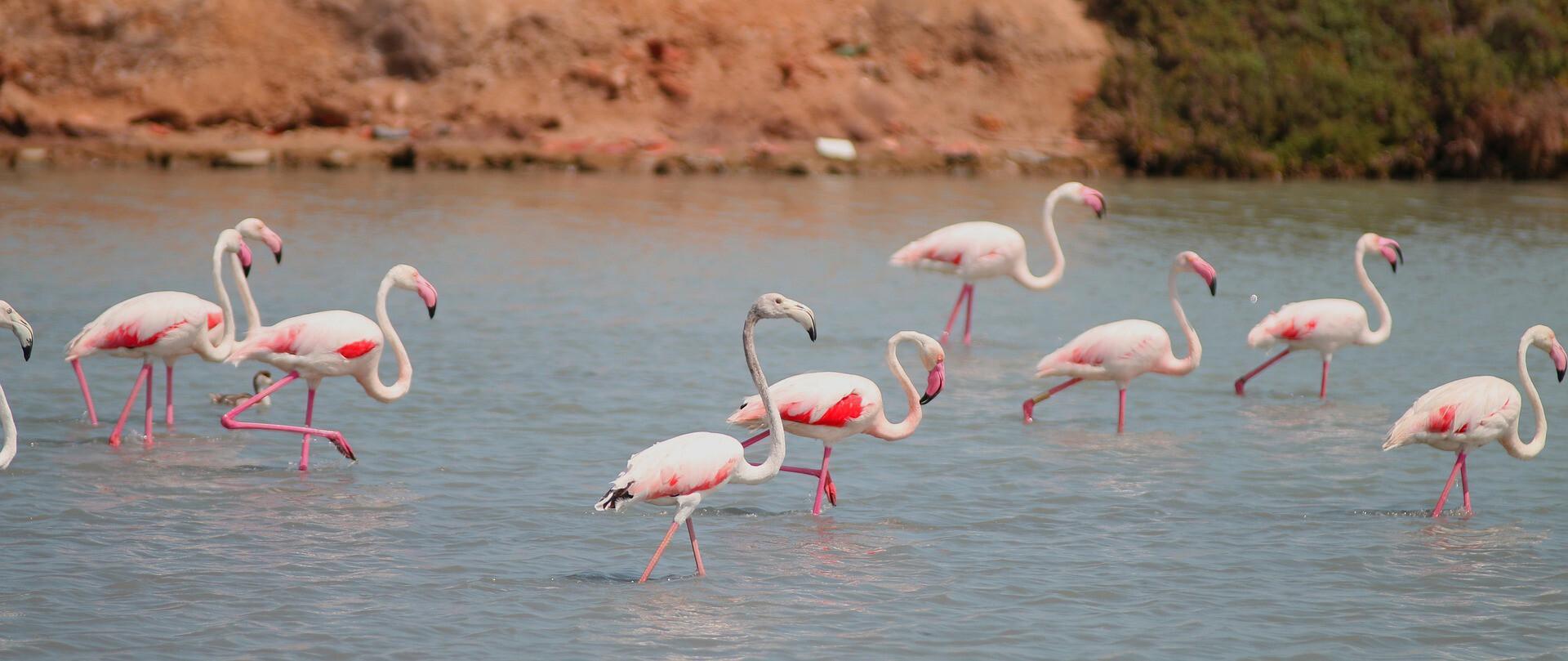ACTIVITIES IN THE AREA SURROUNDING VILLA GUAPA
Hiking & Nature
Hiking & information about the natural landscape
The region of Murcia is located in the southeast of the Iberian peninsula and offers a wide variety of landscapes, such as plains, mountains, caves, ravines and sandy beaches. Murcia enjoys a Mediterranean climate with warm summers and mild winters. Due to these favorable weather conditions, the region is popular for numerous outdoor sports such as hiking, mountain climbing, cycling, horseback riding, skydiving and water sports.
With its national routes and the Vía Verdes that cross the region, Murcia is ideal for hiking.
The Spanish Federation for Mountain and Climbing Sports (Federación Española de Deportes de Montaña y Escalada) promotes hiking in Spain and provides information about trails, safety, clubs and associations. This information can be found on the website of the Federación Española de Deportes de Montaña y Escalada. Information about hiking in the region of Murcia can be found on the website of the Federación de Montañismo Región de Murcia.
The official website of the Spanish Tourist Board also provides more information about hiking in Spain. There are 7 regional parks, 1 nature reserve, 8 protected areas and 3 other areas in Murcia. More information about the natural areas of Murcia can be found on their respective websites. The protected regional parks offer few sporting opportunities. For example, the Parque Regional Calblanque has four beaches, but there are no sports facilities. It is, however, a good location for bird lovers and for beach walks.
The Salinas y Arenales National Park is only a 15-minute drive from our vacation home
Salinas y Arenales de San Pedro del Pinatar is a natural park in the Spanish municipality of San Pedro del Pinatar, in the northern part of the province of Murcia. It lies between the Mar Menor lagoon and the Mediterranean Sea. The Salinas of Torrevieja and La Mata can also be found nearby.

The salt lakes near the fishing village of San Pedro del Pinatar are located in the northern part of Mar Menor. Salinas is Spanish for salt mines and refers to the salt mines near the fishing village. Arenales means "beaches" and refers to the beaches of Mar Menor and the Costa Cálida.
In 1985 the area was designated a protected natural area, and in 1992 was recognised as a park of the region of Murcia. It is an area with abundant water and sand, bordered to the south by dams that are connected to the Mar Menor and the Mediterranean Sea. Since 1994 it has been included on the list of wetlands of international importance (Ramsar Convention). Since 1998 it has been considered a special protection area for birds (SPA), meaning it belongs to the Natura 2000 network of the European Union.
Hiking trails and cycle paths have been laid out in this protected nature reserve covering approx. 2250 sq m, as well as beautifully landscaped viewpoints from which you can admire the flamingos. The flamingos gather here at the end of the summer to make the trek to Africa for the approaching winter. There is a research center to visit that offers excellent information in various languages. With a little luck, you will see many water birds in this nature reserve such as plovers, swallows and whimbrels. The area consists of dunes, pine trees and very clear water. Here, too, admission is free. The park is located at the entrance to San Pedro del Pinatar.
The Salinas is a very important nature reserve for numerous bird species to rest and nest. The variety of flora and fauna and the salt extraction area make this protected nature reserve a textbook example of sustainable development.
Parque Regional Sierra Espuña
The Parque Regional Sierra Espuña spans 25,000 hectares and runs through the Sierra Espuña mountain range. There is a great variety of fauna and flora here such as spruce, wild boar and the Espuña squirrel. It is an ideal location for hiking, mountain climbing and mountain biking.
An unspoilt stretch of coast with inhospitable cliffs, dunes, long, golden-yellow beaches and a deep blue sea, ideal even in high season for escaping all the hustle and bustle.
The natural park can be traversed on foot, by bike or on horseback. It provides a habitat for a number of special plant species (black juniper, dwarf palms and dogwood) and birds such as flamingos, herons and storks around the Salinas de Rasan salt marshes. It is a lovely route indicated by white and red markings.
It is recommended to wear sports shoes or good hiking shoes. The mountain cliffs were named ATALAYON (hill). It's a hike you should definitely go on if you like unspoilt nature and deserted sandy beaches. The view from the top of the cliffs is truly phenomenal. Be sure to bring drinks, because you can't buy anything in the mountains.
The Centro de Interpretación Ambiental del Parque Regional de Sierra Espuña provides information about sporting opportunities in the area, see their website (click here).